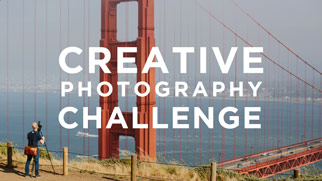I’m no photojournalist – but I have huge respect for those men and women who put themselves in dangerous zones, risking their lives, to show the world some of its most important (horrifying) images. I’ve been asked before if I’d consider taking pictures in the line of fire and my answer is simple: Hell No. I just do not have the balls. Hang me out a chopper, put me on the side of a rock wall or a mountain face, I’m game. Guns and bombs aimed at you? I’m out. Thankfully, however, there are others who are compelled to risk their lives for the shot that tells the story.
I’ve long been a fan of the work famed photojournalists James Nachtwey, Larry Burrows and João Silva and was recently again reminded, through a conversation with a friend about war zones in Africa, of the power that photography (and photographers) have to effect change in the world. These three photographers all have riveting stories about how they have pointed their cameras at the extreme edge of human experience to show us all what is happening — in places that most people would rather not go. They go to hell-zones and aim their pictures at our opinion, so we can make up our minds, from the couch. The consistent motivation for these three photographers – and the many others I have met and admire – is an unshakable belief that there is a vital story that must be told. Hats off to them.
Nachtwey. Photography legend James Nachtwey, who was the subject of the Academy Award nominated 2002 documentary War Photographer, says in the film,
For me the strength of photography lies in its ability to evoke a sense of humanity…used well it can be a powerful antidote to war. In a way, if an individual assumes the risk of placing himself in the middle of a war in order to communicate to the rest of the world what it is happening – he is trying to negotiate for peace.
The full video clip of this quote is here. Christian Frei’s film War Photographer follows Nachtwey. With a meta technique of filmmaker shooting photographer, Frei follows the brave veteran for two years while traipsing into violence and suffering. The film discusses Nachtwey’s motivations and how he deals with taking on all the pain of the world. Check out the film’s website here and for Nachtwey’s moving Ted Talk click here. In 2014, James was reported shot in Thailand. Wound was to his left leg – no bones hit…and of course Nachtway went immediately back to work. Saw it here in Time mag. Makes this post all the more intense IMHO!
Burrows. Larry Burrows, whose had a history of creating insanely powerful work from Southeast Asia from the late 60s and early 70s, helped to bring the Vietnam war’s ugly truth to the world.
His photos in Life magazine brought the reality of America’s deep involvement in the jungles of Vietnam. Photos, like the one below, “Reaching Out,” came to encompass and translate the long and sad campaign and helped to shift public opinion of the war – which ultimately played a large role in America’s withdrawal from Vietnam. Burrows paid the ultimate price for this work when he and three other photo journalists were killed when their helicopter was shot down over Laos in 1971.
Silva. Sometimes the price these photographers pay is shy of death, but still severe. Like so many soldiers, photo journalist João Silva lost both his legs stepping on a land mine in Afganistan. Silva explains:
“I’ve spent enough time out there for my number to come up. I was one of the few who kept going back to Iraq. People think you do this to chase adrenaline. The reality is hard work and a lot of time alone. Firefights can be exciting, I’m not going to lie, but photographing the aftermath of a bomb, when there’s a dead child and the mother wailing over the corpse, isn’t fun. I’m intruding on the most intimate moments, but I force myself to do it because the world has to see those images. Politicians need to know what it looks like when you send young boys to war. If it’s humanly possible, if the prosthetics allow me, I’ll go back to conflict zones. I wish I was in Libya at the moment, without a shadow of a doubt.”
As of this writing, Silva is back to work as a New York Times photographer. Check out his work here.
Below are a selection of photos from Nachtwey, Burrows and Silva, plus a handful of other famous shots, from the midst of the hell of war. A respect for those willing to die for the story. #Gratitude
______________
[A 2011 Guardian special report on the life of a war photographer collecting blurbs from photogs on why they do what they do. Read the full piece here — note that there are some graphic images involved.]





































Very moving images showing the true atrocity of senseless war. Not for me as a photographer, but for those brave enough to do so, highlights what really goes on, pretty much always unnecessarily.